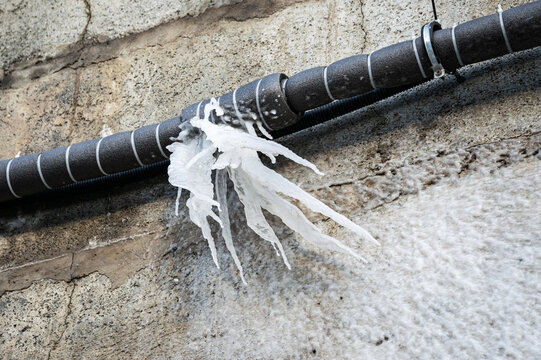Avoiding Frozen Plumbing in Cold Weather: Essential Advice
Avoiding Frozen Plumbing in Cold Weather: Essential Advice
Blog Article
The article down below involving Helpful Tips to Prevent Frozen Pipes this Winter is incredibly enlightening. Try it and draw your own personal final thoughts.

Winter can ruin your plumbing, especially by freezing pipes. Here's exactly how to avoid it from occurring and what to do if it does.
Introduction
As temperature levels decrease, the danger of frozen pipes rises, possibly leading to expensive repair services and water damage. Comprehending exactly how to avoid frozen pipes is crucial for property owners in chilly climates.
Avoidance Tips
Insulating prone pipes
Wrap pipelines in insulation sleeves or make use of warmth tape to secure them from freezing temperatures. Concentrate on pipes in unheated or outside locations of the home.
Home heating methods
Keep indoor spaces appropriately heated up, especially areas with plumbing. Open closet doors to enable cozy air to circulate around pipelines under sinks.
Exactly how to determine frozen pipes
Seek decreased water flow from taps, uncommon smells or noises from pipelines, and noticeable frost on subjected pipes.
Long-Term Solutions
Architectural changes
Take into consideration rerouting pipelines far from outside wall surfaces or unheated locations. Include extra insulation to attic rooms, cellars, and crawl spaces.
Upgrading insulation
Buy top quality insulation for pipelines, attics, and wall surfaces. Correct insulation assists maintain constant temperature levels and lowers the threat of frozen pipelines.
Securing Outdoor Plumbing
Yard pipes and outside taps
Disconnect and drain garden pipes before winter season. Set up frost-proof faucets or cover outdoor faucets with protected caps.
Comprehending Frozen Pipelines
What triggers pipes to ice up?
Pipes freeze when subjected to temperatures listed below 32 ° F (0 ° C) for extended periods. As water inside the pipes ices up, it expands, putting pressure on the pipe walls and potentially creating them to burst.
Threats and problems
Frozen pipelines can result in water disruptions, building damages, and costly repair services. Burst pipelines can flood homes and cause substantial architectural damages.
Indications of Frozen Pipeline
Determining icy pipelines early can avoid them from rupturing.
What to Do If Your Pipelines Freeze
Immediate activities to take
If you suspect icy pipes, maintain faucets open to ease pressure as the ice melts. Use a hairdryer or towels taken in warm water to thaw pipelines slowly.
Verdict
Protecting against frozen pipes needs proactive actions and fast reactions. By comprehending the causes, indications, and safety nets, property owners can safeguard their plumbing throughout cold weather.
5 Ways to Prevent Frozen Pipes
Drain Outdoor Faucets and Disconnect Hoses
First, close the shut-off valve that controls the flow of water in the pipe to your outdoor faucet. Then, head outside to disconnect and drain your hose and open the outdoor faucet to allow the water to completely drain out of the line. Turn off the faucet when done. Finally, head back to the shut-off valve and drain the remaining water inside the pipe into a bucket or container. Additionally, if you have a home irrigation system, you should consider hiring an expert to clear the system of water each year.
Insulate Pipes
One of the best and most cost-effective methods for preventing frozen water pipes is to wrap your pipes with insulation. This is especially important for areas in your home that aren’t exposed to heat, such as an attic. We suggest using foam sleeves, which can typically be found at your local hardware store.
Keep Heat Running at 65
Your pipes are located inside your walls, and the temperature there is much colder than the rest of the house. To prevent your pipes from freezing, The Insurance Information Institute suggests that you keep your home heated to at least 65 degrees, even when traveling. You may want to invest in smart devices that can keep an eye on the temperature in your home while you’re away.
Leave Water Dripping
Moving water — even a small trickle — can prevent ice from forming inside your pipes. When freezing temps are imminent, start a drip of water from all faucets that serve exposed pipes. Leaving a few faucets running will also help relieve pressure inside the pipes and help prevent a rupture if the water inside freezes.
Open Cupboard Doors
Warm your kitchen and bathroom pipes by opening cupboards and vanities. You should also leave your interior doors ajar to help warm air circulate evenly throughout your home.

As a serious person who reads on Winter Plumbing Precautions: Preventing Frozen Pipes, I figured sharing that excerpt was essential. Are you aware of anybody else who is fascinated by the topic? Feel free to share it. Thank you for your time invested reading it.
Click Here Report this page